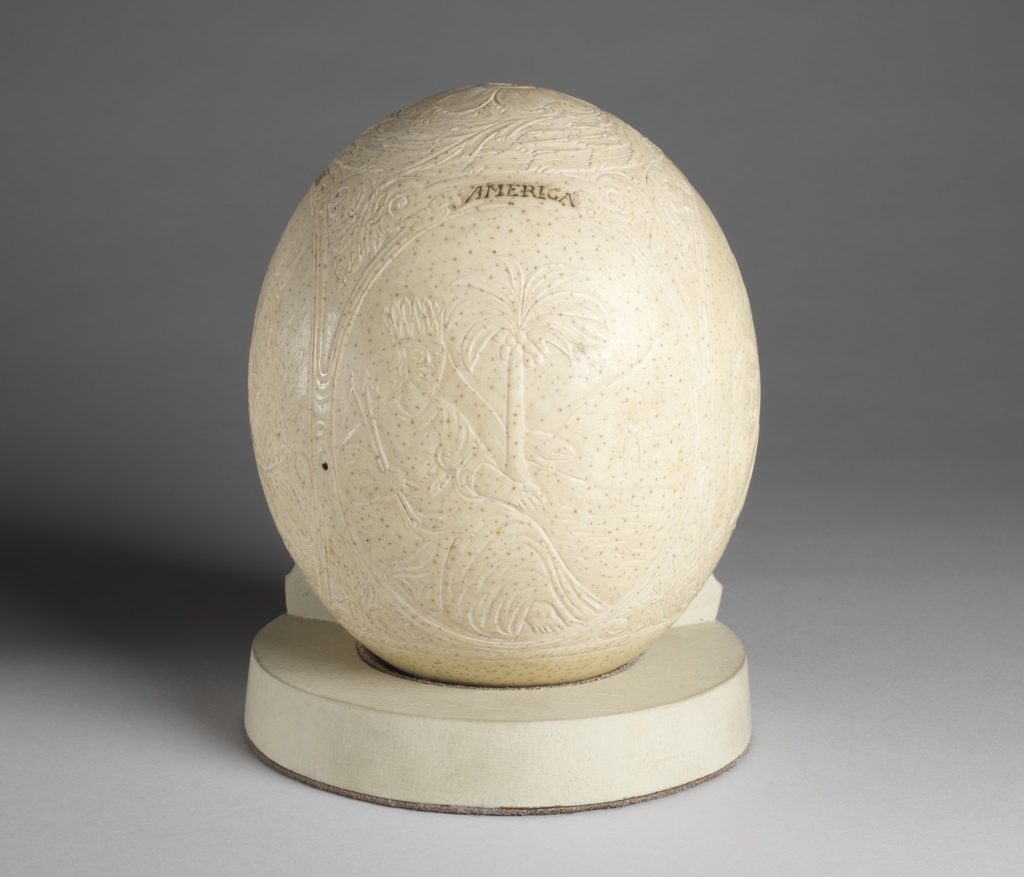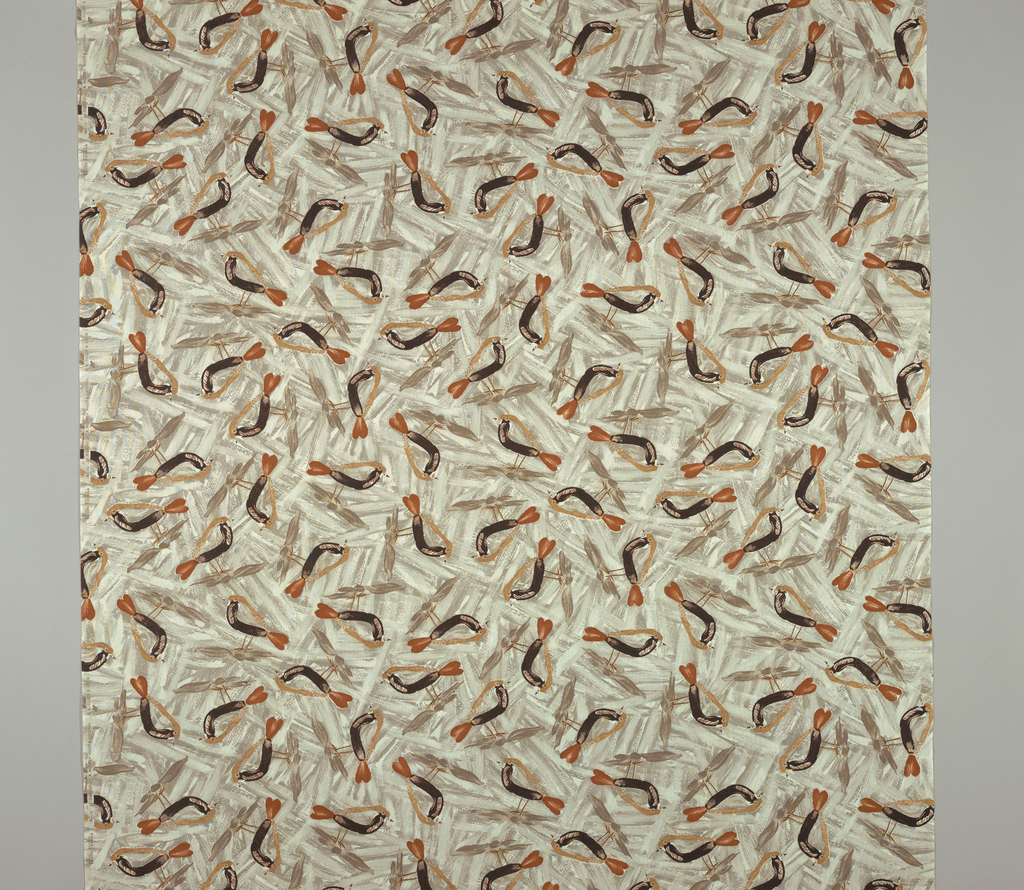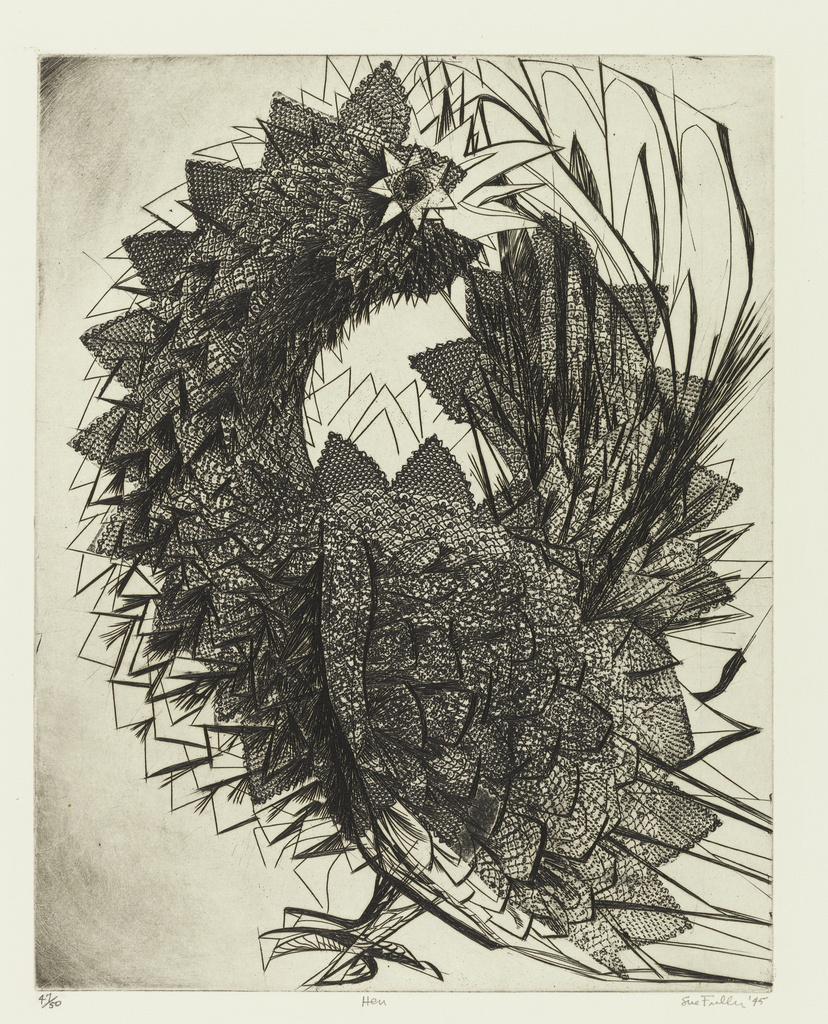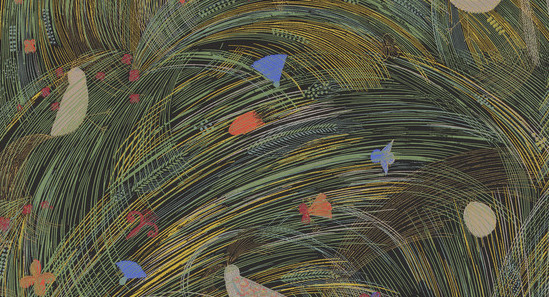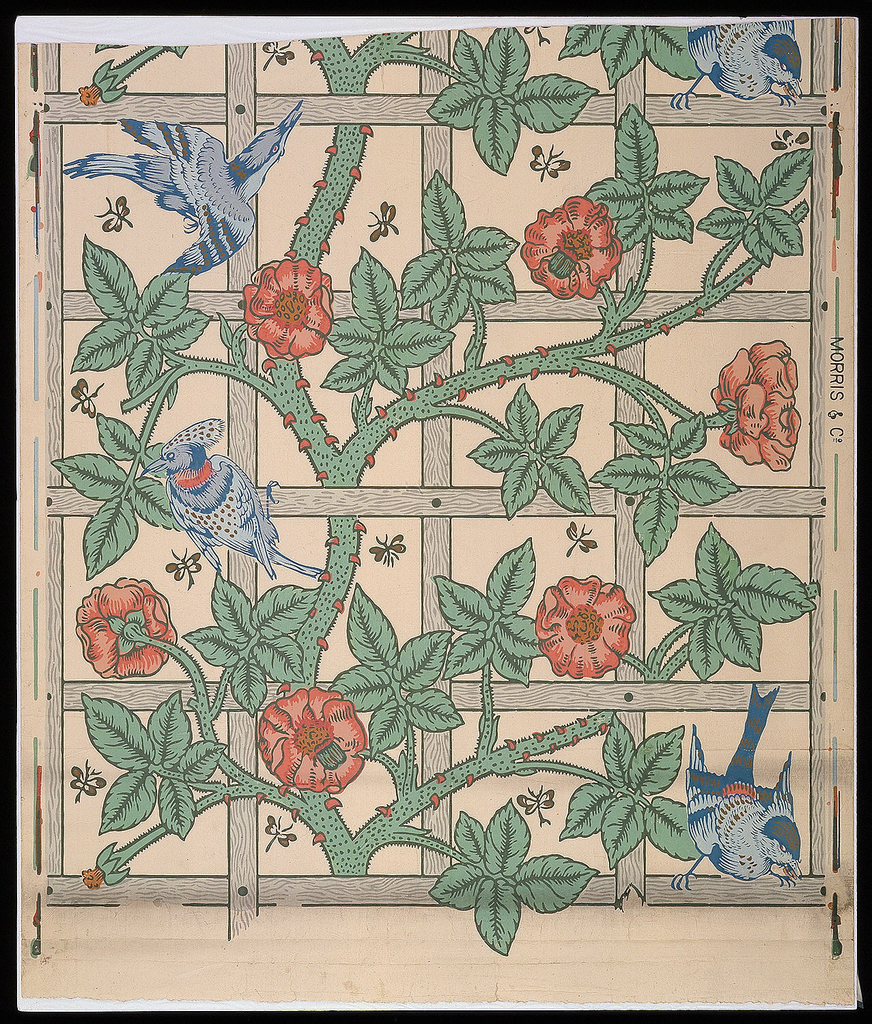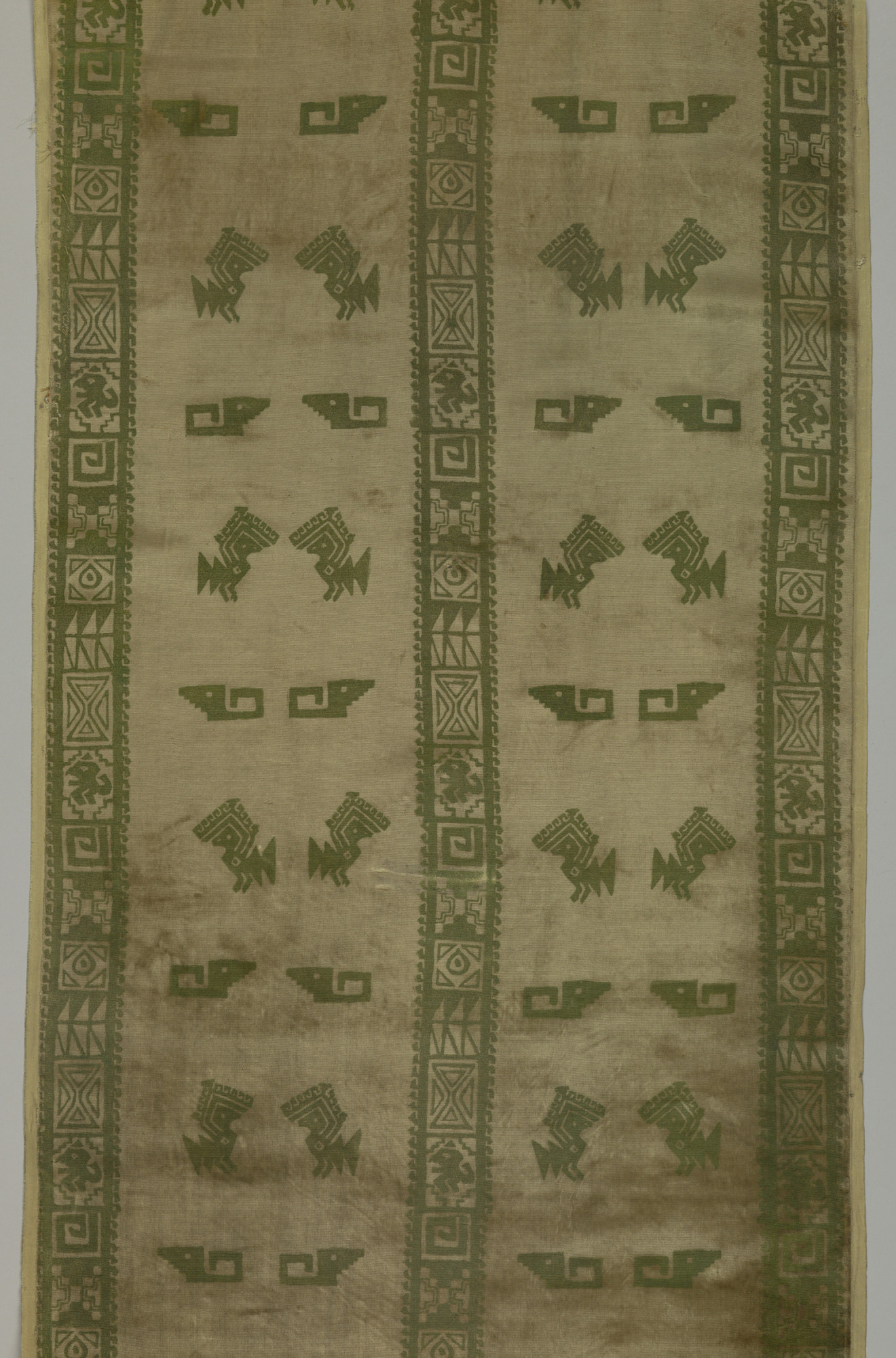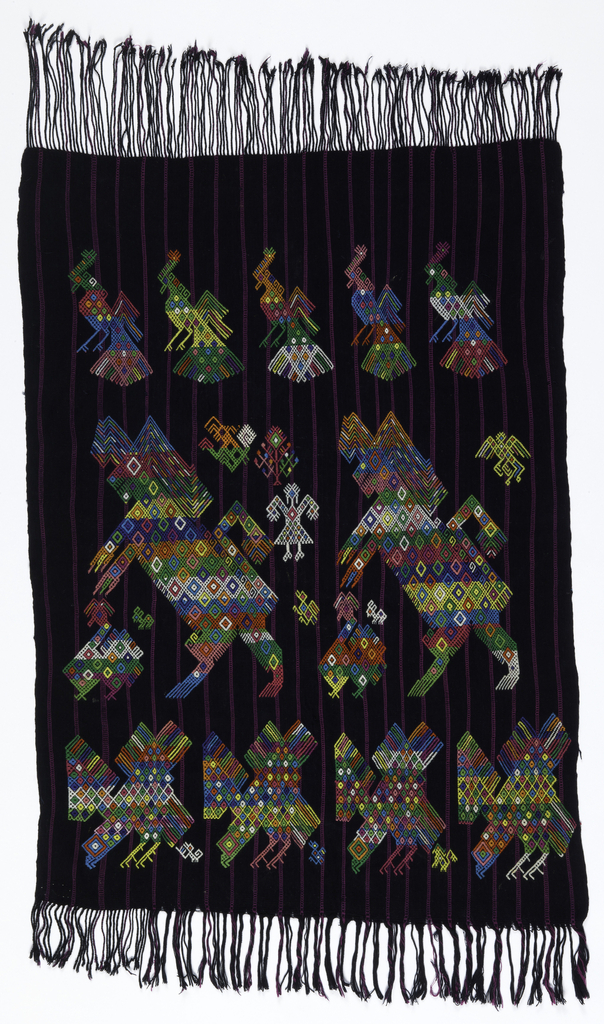This ostrich egg is carved with allegorical figures representing the Four Continents—Europe, Asia, Africa, and America—a subject that originated in sixteenth-century drawings and prints and that later gained popularity in the decorative arts.[1] The collection of the late James Hazen Hyde, from which the ostrich egg comes, comprised hundreds of objects and prints depicting the...
This paper attributed to the wallpaper manufacturer Delicourt depicts the Roman goddess Juno and would have been part of a set of panels that featured members of the Roman pantheon. The accompanying panels would have likely shown Juno’s husband Jupiter as well as two or three other gods, and the whole set would possibly have...
Felieke van der Leest’s Grey Heron Airplane ring is full of the whimsy which is an integral component of the artist’s imaginative and sophisticated design process, which incorporates techniques such as bead weaving and crocheting. This ring, like much of Van der Leest’s work, focuses on the use of mass produced toy animals, highlighted by...
In 1953, Dan Fuller, president of Fuller Fabrics, invited five of the 20th century’s most distinguished artists: Pablo Picasso, Fernand Léger, Marc Chagall, Joan Miró, and Raoul Dufy, to collaborate on a line of textiles to be called the Modern Master Series. The concept was unique in that the artists were not commissioned to produce...
Famously known for her sculptural compositions of thread and string, Sue Fuller (American 1914-2006) was first successful in the realm of printmaking. Her print work in the 1940s and 1950s show a strong use of textiles to communicate texture and bring her abstract images to life. Fuller was born in Pennsylvania, the daughter of a...
This lively sidewall is the work of Felice Rix-Ueno, a designer who produced numerous textile and wallpaper patterns in the 1920s for the Wiener Werkstätte, the famous Viennese production company and artist collective formed in 1903. Her work is an excellent example of late Wiener Werkstätte designs. With the arrival of several female designers beside...
William Morris wallpapers are quite extraordinary on several counts. Morris designs are all quite striking, even the patterns printed in a single color. Morris started designing wallpapers in the 1860s and most of these patterns are still being produced today. That says a lot about the appeal of his designs. Cooper Hewitt collection contains most,...
In 1972 Cooper Hewitt received a bequest of textiles from New York City architect and artist Julian Clarence Levi (American, 1874-1971). It mainly was comprised of French and Indonesian textiles, but also included two unusual velvet panels printed with pre-Columbian bird motifs and other forms. The design itself is rather simple and contains two vertical...
You wouldn’t know this is a ceremonial Tzute or headpiece by just looking at it. Utilitarian indeed, one gets lost in its rainbow colors and loom-weaved energy. The anthropomorphic animal imagery shows chickens, peacocks and two horses standing erect, surrounded by more avian shapes and (alas!) a human figure in bird transcendence. Illuminated, obsessed, invoking...
